- Home
- Harlan Ellison
The City on the Edge of Forever
The City on the Edge of Forever Read online
THE CITY ON THE EDGE OF FOREVER
by Harlan Ellison®
Copyright © 1995, 1996 by The Kilimanjaro Corporation.
is an Edgeworks Abbey® Offering in association with ereads.com.
Published by arrangement with
the Author and The Kilimanjaro Corporation.
Harlan Ellison and Edgeworks Abbey
are registered trademarks of The Kilimanjaro Corporation.
This edition is copyright © 2008 by The Kilimanjaro Corporation.
All rights reserved.
Front Cover Photo by Stathis Orphanos.
Copyright © Stathis Orphanos.
First e-reads publication: 2009
www.ereads.com
Harlan Ellison website: www.harlanellison.com
No part of this book may be reproduced or transmitted in any form or by any means electronic or mechanical—including photocopy, recording, Internet posting, electronic bulletin board or any other information storage and retrieval system, or by any other method, means or process of embodying and/or transmitting information, text or the spoken word now known or hereafter devised without permission in writing from The Kilimanjaro Corporation, except by a reviewer who may quote brief passages in a critical article or review to be printed in a magazine or newspaper, or electronically transmitted on radio, television or in a recognized on-line journal. For information address Author's agent: Richard Curtis Associates, Inc., 171 East 74th Street, New York, New York 10021, USA.
All persons, places and organizations in the teleplay sections of this book except those -clearly in the public domain–are fictitious and any resemblance that may seem to exist to actual persons, places or organizations living, dead or defunct is purely coincidental. The scenario is a work of fiction.
THE CITY ON THE EDGE OF FOREVER (original Author's version, not rewritten shooting script as aired) by Harlan Ellison. Copyright 1975 by Harlan Ellison; extended version copyright ©1995 by The Kilimanjaro Corporation. New material copyright © 1995 by The Kilimanjaro Corporation. All rights reserved.
Excerpts from "Perils of the 'City' originally appeared in SIX SCIENCE FICTION PLAYS, Washington Square Press, 1976; and (under the editorial retitling "Look Back in Anger") in TV Guides's Collector's Edition: Star Trek, Spring 1995. Copyright © 1976 by Harlan Ellison. Renewed, 2004 by The Kilimanjaro Corporation. Copyright © 1995 by The Kilimanjaro Corporation. The complete "Perils of the 'City' is copyright © 1995, 1996 by The Kilimanjaro Corporation.
Star Trek is a registered Trademark of Paramount Pictures.
"Afterword" copyright © 1995 by Peter David.
"Afterword" copyright © 1995 by D.C. Fontana.
"Afterword" copyright © 1995 by David Gerrold.
"Afterword" copyright © 1995 by (The Estate of) DeForest Kelley.
"Afterword" copyright © 1995 by Leonard Nimoy.
"Afterword" copyright © 1995 by Walter Koenig.
"Afterword" copyright © 1995 by George Takei.
"Afterword" copyright © 1995 by Melinda M. Snodgrass.
Publisher's Note
The print edition of Harlan Ellison's The City on the Edge of Forever includes many additional materials such as magazine clippings, letters and production notes. We found that when resizing these images for e-book resolution they were barely readable. But we wanted the customers who purchased the e-book to be able to enjoy them, so we've housed these images on the E-Reads website. Just visit the following URL:
http://www.ereads.com/cityontheedge
Acknowledgments
Only time will tell. Those who deserve thanks in the Hard Times of one year, turn out to be somewhat less deserving in the Harsh Glare of three decades later. We live and learn. Sometimes we live and learn and get so damned angry we forget earlier kindnesses blunted by the ache of betrayal. Which is about as Zen as I care to get.
Back then, when the series was just debuting and I was writing the teleplay you’ll be reading here, both Herb Solow and Bobby Justman were extraordinarily kind to me. Time has passed away, and maybe memory has dimmed, and I ain’t very happy about some of the things these two pals of days-gone have written and said about events covered in this book…but I remember with clarity how they befriended me back then, and I would rather dwell on those times than these. So, I thank Herb and Bob.
Steadfast from the git-go, David Gerrold and John D. F. Black and Dorothy Fontana, whom you know as D. C. Fontana. Years have slipped behind us, the four of us, and Johnny’s beard has grown to truly Moseslike proportions; and David just got around to writing the best story of his career (“The Martian Child”) and they gave him a Hugo and a Nebula for it, and he’s finally managed to shuck off that cloaca of being “just a Star Trek tv writer”; and Dorothy, well, despite a truly recent stunning revelation included in her Afterword to this volume, I confess to deep and unassailable admiration and affection. These are four from the old days (and from this four-year agony of putting City between covers). It took four years because it was the hardest, probably nastiest, job of writing I’ve ever had to do, and when it was almost finished, Gene Roddenberry screwed me up yet one more time by dying.
Here are the soldiers and scavengers and hustlers and shotgun-riders who helped get this book into your hands. Please kindly do not forget this list. Commit it to memory. When those of you who will get demented at what I’ll be saying in these pages run amuck and come with blazing torches to schlep me out of my bed for crucifixion, I’d like to think all these aiders and abetters will likewise dot the landscape with their anguished bodies. No one likes to be the only yotz at the party.
In no particular order:
Mark Evanier; David S. Rosenbaum at Paramount legal; Richard Curtis; Larry Closs, Executive Editor at TV Guide; Kevin Ryan at Pocket Books, who served as amenuensis; Sharon Buck; Bill Amend, creator of the wonderful cartoon strip, Fox Trot, for allowing me to reprint the gag on page 46 [of the original version of this text]; and to a decent and honorable investigative journalist who cannot be named, and to employees of NBC and Paramount who cannot be named, and to divers correspondents, informants, moles and insiders who cannot be named…my secret thanks to you all. Have no fear: they could pound my balls flat with a steel-stamping press, and they’ll never get your names from me; not even yours, Arthur.
It’s been a killer of a preproduction procedure. Months. Snarls. Immaturity, rudeness, earthquakes, medical problems, idiot computer programs that required us to proof these pages over and over till we nearly lost our eyesight and our minds, heart attacks, quadruple bypass surgery, poverty, lies, blasphemy, perfidious behavior, tainted foods, strange alien creatures from foreign lands, senility, uncontrolled flatulence, impending death or disfigurement. Months. Snarls.
But we got through it, and we’re still alive, so what the hell. Thank you to Scott Cohen, our fecund and idefatigable designer, right up to the blue line additions. Thank you. Thank you particularly to the remarkable Laura Perkinson, White Wolf’s demon editrix on this project. Her attention to detail, her delicious punctiliousness, her dogged commitment to producing an error-free text, cannot be praised highly enough. Thank you. Now go put a cold compress on your brow.
The good friends who wrote the Afterwords. Each a star, each with better things on which to spend time than writing a coda to this book. But they did it. Because they’re stand-up. I am in the debt of each of you. (Not to mention Stewart Wieck.)
Last of all, Susan. My wife. Yeah, you.
If it were not for Susan, trust me on this, I would long-since have taken to the streets with an assault rifle. You can all thank your lucky stars she’s here on my behalf—because frankly, it’s been decades since I was a responsible person.
Not once, but many times.
Not just in private chats,
but in print, on the air,
and where it counted.
For thirty years he knew
the truth and wasn’t afraid
to tell it. He was there.
In friendship,
this one is for
ALAN BRENNERT
The author with Leonard Nimoy and William Shatner, in 1966, on the set of STAR TREK® with the inscriptions, "Who's the kid in the middle – Bill Shatner" and "Harlan – love you and your great credits – Leonard Nimoy."
“It’s not the vision I had.”
Gully Jimson
The Horse’s Mouth
by Joyce Cary
WOULD YOU BUY A USED GALAXY FROM THIS MAN?
30 MARCH 1988
MUSEUM OF BROADCASTING, 5TH ANNUAL TELEVISIONFEST HELD AT THE LOS ANGELES COUNTY MUSEUM OF ART’S LEO S. BING THEATER
GENE RODDENBERRY SPEAKS TO THE CROWD.
In answer to a question about the writers on the original Star Trek series: “Most of those I don’t want in the same room with me. I’ve given all of them a chance. Harlan got a chance on the first show and wrote a $350,000 estimate budget show in those days when we only had $186,000. And when I told him to cut the budget, he sent me back a note that said, ‘Do it with special effects.’ He then submitted his original script for a Writers Guild Award, and when he won the prize, which he deserved for the script…except that many people would get prizes if they wrote scripts that were budgeted out at three times the show’s cost. I rewrote that script for Harlan, and it won the Nebula Award, which he rushed up on stage and took credit for, too…David Gerrold has been condemning the show constantly, although I had him on staff for many months. He never wrote an episode we could shoot. So beware of these people that are loud voices. Give your attention to people who quietly do good work.” (Thunderous applause.)
CAN YOU SPOT THE DEMENTED LIES IN THE ABOVE TRANSCRIPT?
(Clue: “The City on the Edge of Forever” never won a Nebula Award. It won a Hugo. In a letter to Harlan Ellison only two months after “City” aired, Gene Roddenberry stated the episode had only been $6,000 over budget. When Ellison accepted the Hugo Award—only one of the 8 1?2 he has won—he clearly noted to the vast audience that this honor was being bestowed on a crippled, eviscerated, fucked-up version of his original dream. David Gerrold never wrote an episode that Gene thought was shootable…then how do we account for something titled “The Trouble with Tribbles”?)
NOW READ “Perils of the ‘City’” AND LEARN THE TRUTH!
INTRODUCTORY ESSAY
AUTHOR’S NOTE
There was a 1000-copy limited edition of this book published in late October of last year. Due to arbitrary technical limits set on the size of the volume, two years before the book was actually written, the introductory essay that follows had to be truncated. Additional material already at hand could not be included, and a number of egregious errors were introduced into the introductory text. This edition includes all of that additional material, addresses the glitches and inconsistencies of the earlier essay, and speaks to subsequent assertions about “City” and the Author made in several books published since last year. I don’t expect ever to be free of the endless gossip, surmises, misstatements, uninformed theories and “Chinese Whispers” attendant on “City,” but as best I can tell it, and with truthfulness as best I can practice it (the poet Olin Miller has written “Of all liars, the smoothest and most convincing is memory”), this is the corrected, full story.
Perils of the “City”
Speak no ill of the dead?
Oh, really? Then let’s forget about writing a true introductory essay to this book. Let’s give a pass to setting the record straight. Let’s just shrug and say, ah, what the hell, it’s been more than thirty years and the bullshit has been slathered on with a trowel for so damned long, and so many greedy little pig-snouts have made so much money off those lies, and so many inimical forces continue to dip their pig-snouts in that Star Trek trough of bullshit that no one wants to hear your miserable bleats of “unfair! unfair!”…that it ain’t worth the price of admission, Ellison. So shine it on, and let the keepers of the holy flame of Star Trek and the preservers of the bullshit myth of Roddenberry have the field to themselves. The field, and the exchequer.
Oh, yeah, that’s what lies at the core of it. The money.
What is it Deep Throat said: Follow the money.
If it weren’t for the money, for that overflowing Star Trek trough in which the pig-snouts are dipped every day, no one would give a rat’s-ass if the truth about Roddenberry and the show got told. But if you follow the money, you see that river of gold flowing straight off the Paramount lot in boring sequel-series after clone-show, and you see the merchandisers and the franchisers and the publicists and the QVC hustlers and bought critics like TV Guide’s Jeff Jarvis, and you see the fanmagazine fanatics and the convention-throwers and the endless weary biographies and the huge pseudo-book franchise of useless Star Trek novels written by a great many writers who ought to take up flyspeck analysis instead of littering the bestseller lists with their poor excuses for creative effort (not to mention the few really excellent writers who ought to know better, but have gulled themselves into believing they’re writing those awful turd-tomes out of adolescent affection for nothing nobler than a goddamn tv show, when the truth is they’re doing it for the money, they follow the money, just like all the other Star Trek barnacles attached to that lumbering behemoth); and you see the venal liars and adulterers and con-artists and charlatans and deluded fan-fools who have a vested interest in keeping Star Trek sailing along, and all the innocent but naive tv absorbers, and you figure, Ah what the hell, Ellison, let it go! Just forget about it!
And, pretty much, except when my anger got too intense, or my gorge got too buoyant, or when one of the little piss-ants got within arm’s reach, I have let it slide for thirty years.
Thirty years. That is a piece of time.
Probably more years than are owned by most of the people who will buy this book. And with the historical soapbox Star Trek stands upon, to insure its posterity (not to mention its view of “how things happened”), the story those under-30 readers will have had to swallow by the time they get to this book…well, Ellison’s somewhat jaundiced and politically unkempt telling of that history has about as much chance as a snowball in a cyclotron.
So. Speak no ill of the dead. And let it go, pal. Give it a rest. As my wife says, belt up.
And I have. For thirty years, more or less. I won’t dissemble and pretend that I haven’t tried to refute some of the most widely-held canards-cum-mythology that have circulated through the Star Trek world, at conventions, or in private conversations. But in the main, for the most part, partially out of dismay and partially out of weariness, I’ve let most of it pass. To attempt to stem the tide of fannish folderol and gossip would mean I’d have to devote every waking hour to an essentially pointless task. And it would be as likely to do any good as trying to sweep the beach clean of sand.
As for that “speak no ill of the dead” admonition, I only wish the same Christian Charity was visited on the living. Yet I never said anything about Roddenberry in private or public that I didn’t (or wouldn’t have) said to his face.
But trying to present another viewpoint of Roddenberry—and we’re talking now about all those years prior to his death, before the tell-all books by virtually every member of the cast, before the scathing revelations in GENE RODDENBERRY: The Myth and the Man Behind Star Trek (Hyperion, 1994) by investigative journalist Joel Engel, before even the whitewash biography by David Alexander—a man who was in Roddenberry’s hip pocket when Gene was alive, and managed to get to the task of grave-robbing Roddenberry’s life faster than the speed of blight—titled The Authorized Biography of Gene Roddenberry: STAR TREK CREATOR (ROC, 1994)—trying to portray Roddenberry as anything approaching a fallible human being woul
d bring down the tsunami of Trekkie wrath. To them, he was a bright and shining light, and they would eviscerate anyone who said otherwise. This is a degenerative process called “heroification.”
(As James W. Loewen writes in his 1995 book LIES MY TEACHER TOLD ME: Everything Your American History Textbook Got Wrong, “Heroification…much like calcification…makes people over into heroes. The media turn flesh-and-blood individuals into pious, perfect creatures without conflicts, pain, credibility, or human interest. …authors selectively omit blemishes in order to make certain historical figures sympathetic to as many people as possible. …A certain etiquette coerces us all into speaking in respectful tones about the past. …It perpetuates what might be called a Disney version of history.”
(As Washington Irving wrote in his heavily-heroificated biography of Christopher Columbus, “Care should be taken to vindicate great names from pernicious erudition.”)
By wildly extravagant heroification of Gene Roddenberry, all the untruths, all the false credit, all the betrayal and perfidious behavior he wallowed in, has been permitted to be flensed. …leaving only this glowing icon who wouldn’t tell a lie or hurt a fly. Yeah, and there are actually schmucks who think Adolf Hitler made the trains run on time.
So I tried to let it all pass, without comment most of the time. But thirty years is a piece of change. It is much longer to keep getting kicked in the ass than anyone should have to put up with.
So I let myself get talked into writing this book.

 Repent, Harlequin! Said the Ticktockman
Repent, Harlequin! Said the Ticktockman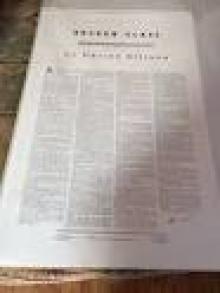 Broken Glass
Broken Glass Other Glass Teat
Other Glass Teat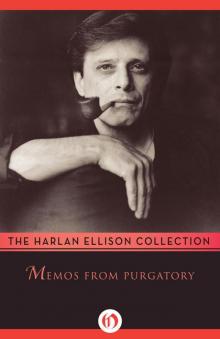 Memos From Purgatory
Memos From Purgatory I Have No Mouth and I Must Scream
I Have No Mouth and I Must Scream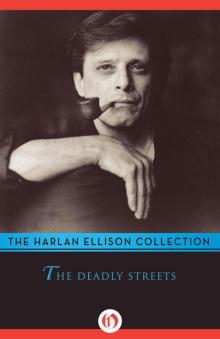 The Deadly Streets
The Deadly Streets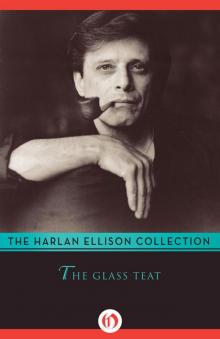 The Glass Teat
The Glass Teat Paingod and Other Delusions
Paingod and Other Delusions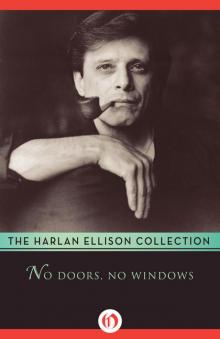 No Doors No Windows
No Doors No Windows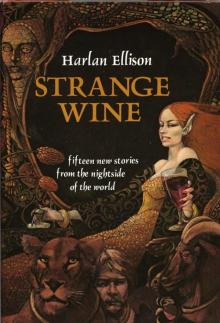 Strange Wine
Strange Wine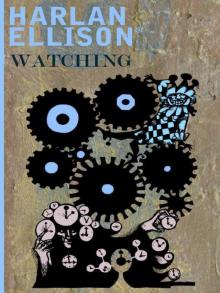 Harlan Ellison's Watching
Harlan Ellison's Watching Over the Edge/An Edge in My Voice
Over the Edge/An Edge in My Voice Troublemakers: Stories by Harlan Ellison
Troublemakers: Stories by Harlan Ellison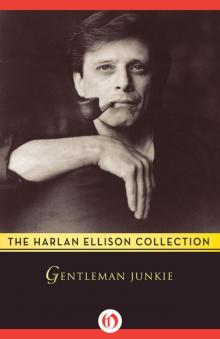 Gentleman Junkie and Other Stories of the Hung-Up Generation
Gentleman Junkie and Other Stories of the Hung-Up Generation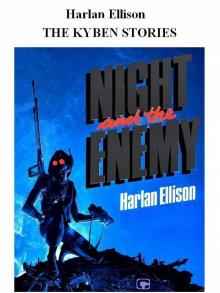 The Kyben Stories
The Kyben Stories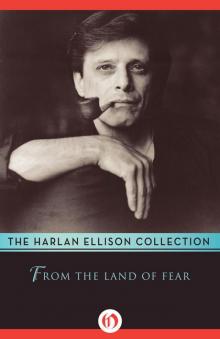 From the Land of Fear
From the Land of Fear The Top of the Volcano: The Award-Winning Stories of Harlan Ellison
The Top of the Volcano: The Award-Winning Stories of Harlan Ellison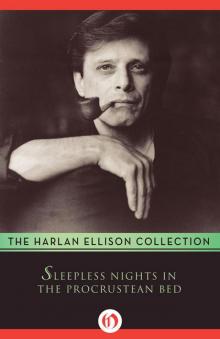 Sleepless Nights in the Procrustean Bed
Sleepless Nights in the Procrustean Bed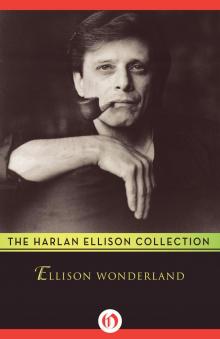 Ellison Wonderland
Ellison Wonderland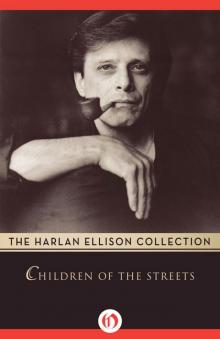 Children of the Streets
Children of the Streets Can & Can'tankerous
Can & Can'tankerous Love Ain't Nothing but Sex Misspelled
Love Ain't Nothing but Sex Misspelled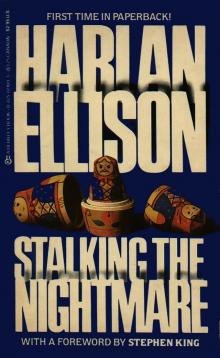 Stalking the Nightmare
Stalking the Nightmare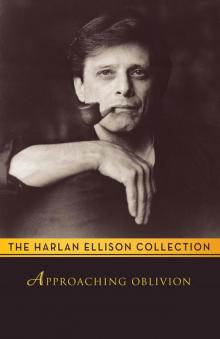 Approaching Oblivion
Approaching Oblivion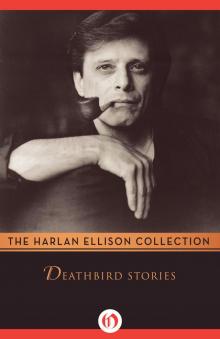 Deathbird Stories
Deathbird Stories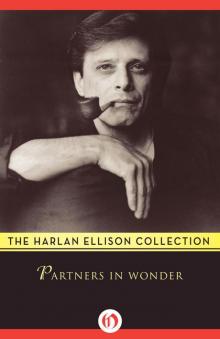 Partners in Wonder
Partners in Wonder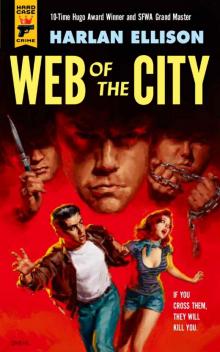 Web of the City
Web of the City Spider Kiss
Spider Kiss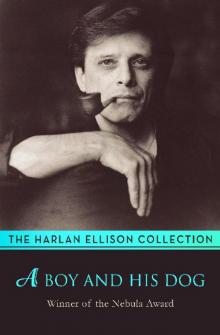 A Boy and His Dog
A Boy and His Dog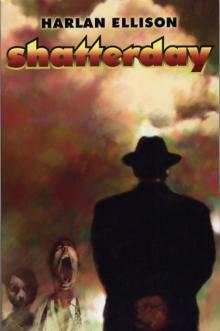 Shatterday
Shatterday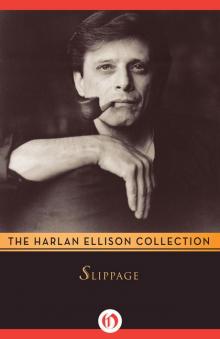 Slippage: Previously Uncollected, Precariously Poised Stories
Slippage: Previously Uncollected, Precariously Poised Stories Repent, Harlequin! Said the Ticktockman
Repent, Harlequin! Said the Ticktockman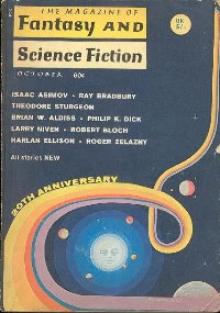 Come to Me Not in Winter's White
Come to Me Not in Winter's White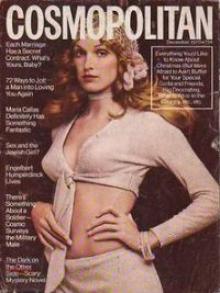 The Song the Zombie Sang
The Song the Zombie Sang The Other Glass Teat
The Other Glass Teat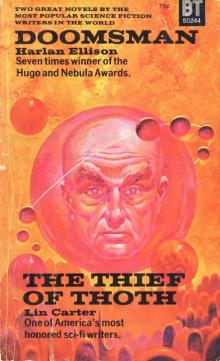 Doomsman - the Theif of Thoth
Doomsman - the Theif of Thoth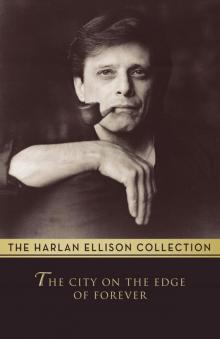 The City on the Edge of Forever
The City on the Edge of Forever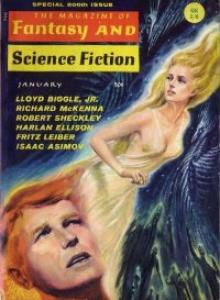 I See a Man Sitting on a Chair, and the Chair Is Biting His Leg
I See a Man Sitting on a Chair, and the Chair Is Biting His Leg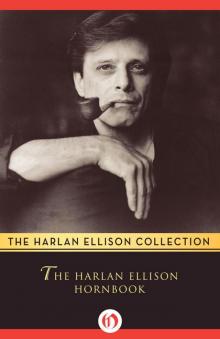 The Harlan Ellison Hornbook
The Harlan Ellison Hornbook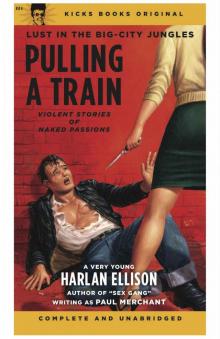 Pulling A Train
Pulling A Train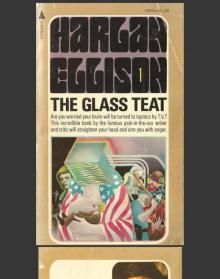 The Glass Teat - essays of opinion on the subject of television
The Glass Teat - essays of opinion on the subject of television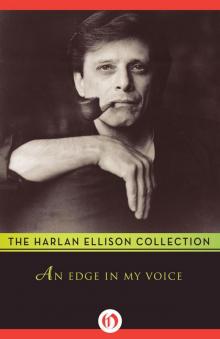 An Edge in My Voice
An Edge in My Voice Angry Candy
Angry Candy Troublemakers
Troublemakers The Top of the Volcano
The Top of the Volcano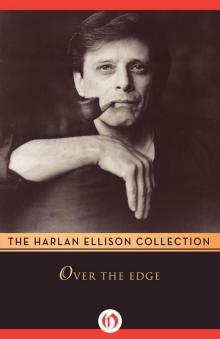 Over the Edge
Over the Edge Survivor #1
Survivor #1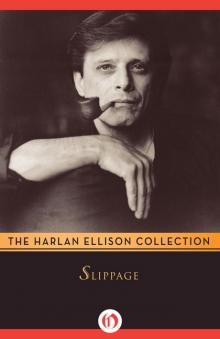 Slippage
Slippage